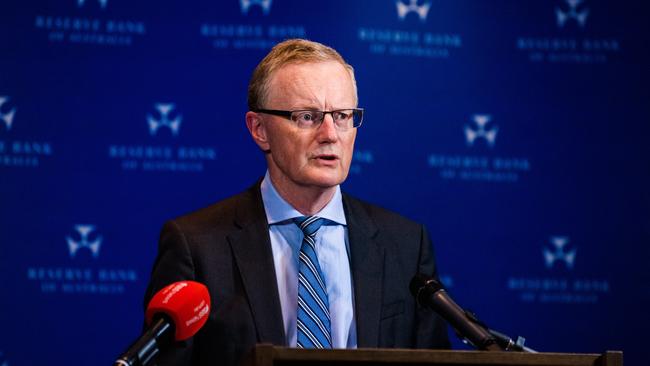Lowe hopes to chart a Goldilocks path out of crisis

The board noted inflation in Australia had increased significantly and was higher than earlier expected thanks to supply chain risks, war and on the domestic front, wages pressure and floods.
Importantly, the board noted that “one source of uncertainty about the economic outlook is how household spending evolves, given the increasing pressure on Australian households’ budgets from higher inflation”.
That concern has been echoed by the business community this week, and the board will be paying close attention to consumption patterns as it sets monetary policy going forward.
The 0.50 per cent rise was markedly higher than most economists who were split into two camps expected either a 20 basis point or 40 basis point rise.
Tellingly, the RBA did not update the inflation peak figure of 6 per cent provided in last month’s statement. On Sunday, Jim Chalmers announced that inflation is now running at a significantly higher rate than the May read of 5.1 per cent. The RBA agrees with him.
Lowe’s statement noted that current inflation pressure and the still very low level of interest rates were the two factors behind the central bank’s decision.
It reiterated that the board was committed to doing “what is necessary to ensure that inflation in Australia returns to target over time”.
However, the directive in last month’s statement that a further lift in interest rates would be required was not repeated in Tuesday’s statement by the governor. Instead he noted “the size and timing of future interest rate increases will be guided by the incoming data and the Board’s assessment of the outlook for inflation and the labour market”.
With this larger than expected jump, the first back to back monthly rate rise in a dozen years Lowe hopes to chart a Goldilocks path to an economy of even kilter.
The board’s task is hard for several reasons. Overwhelmingly it is the confusion between what forces are ongoing and what are transitory.
The US Federal Reserve was confounded by this problem earlier in the year with its FOMC divided for some time on whether or not inflation was transitory. The war in Ukraine and an energy squeeze brought clarity: inflation would be both higher and more sustained in nature.
In Australia, the cost of an iceberg lettuce has reached a staggering $12 thanks to recent flooding in the vast vegetable gardens of the country like the Lockyer Valley. It takes around ten weeks to grow an iceberg to harvest. This is transitory.
The sustained price pressure for supermarkets is in transport and energy costs.
At The Australian’s Global Food Forum, Coles chief executive Steve Cain said he had had five times as may supplier pressing for price rises than the previous year.
Anecdotally, business leaders across energy, food retailing and banking are seeing inflationary pressures. This was acknowledged by the RBA both last month and again on Tuesday.
Asked about the energy crisis in Australia that has caused gas prices to rocket, both Commonwealth Bank chief Matt Comyn and Wesfarmers CEO Rob Scott seemed resigned to households having to weather higher costs.
Comyn said there were no silver bullets, this was something that had to be worked through over time.
“The solutions are difficult to work through, but we need to be very mindful of the impact on households. It will take time to normalise, there are no easy fixes,” said Scott.
Last week, Scott and ANZ chief executive Shane Elliott both noted that more wages pressure is flowing through that the official annual 2.4 per cent figure from May.
On Monday, the government called on the Fair Work Commission to increase the wages of low paid workers at the rate of inflation.
Tomorrow, Chalmers will be the keynote speaker at The Australian and Sky News Australia’s economic outlook event in Sydney.
A good weight of economists feel that the RBA could and should have commenced the tightening cycle earlier. If inflation runs away, experience shows that the later the monetary response, the harder that response has to be and the higher risk of collateral damage to the economy, especially unemployment.
Lower unemployment has been a priority for Lowe throughout his governorship and Australia has achieved a landmark 3.9 per cent this year. But Australia is now out of whack with the RBA’s inflation target range, a CPI of 2 to 3 per cent.
Ahead of the RBA rates decision the ANZ-Roy Morgan consumer confidence rating dropped 4.1 per cent, its lowest since August 2020, most likely due to cost of living concerns.
While the central scenario is for strong household consumption growth this year, the governor stated that the board would be paying close attention to these various influences on consumption as it assesses the appropriate setting of monetary policy.
Even if there is a Goldilocks path out of the current crisis, there always the risk of a bear equity market that disagrees.







The Reserve Bank decision to hike the cash rate a full half a percentage point to 0.85 per cent speaks volumes about its increased concern on inflation.